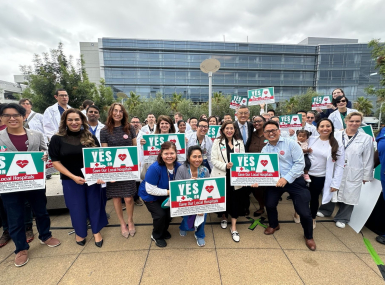NACo submits comments to Senate HELP Committee on health care workforce shortages
Author

Blaire Bryant
Upcoming Events
Related News

Key Takeaways
On March 2, the U.S. Senate Committee on Health, Education, Labor, and Pensions (HELP) Committee released a request for information from health care stakeholders on the causes of and solutions for current health care workforce shortages. NACo submitted a letter in response to the request highlighting counties’ role in the delivery of health care services, identifying drivers of workforce shortages and offering policy recommendations for addressing the root causes of shortages.
NACo identified three major drivers of the current health care workforce shortage:
- Insufficient Medicare provider payment rates
- Unbalanced allocation of resources that do not go directly to communities most in need and longstanding underinvestment in public health at the federal level
- Pandemic-induced burn out
In addition to underlining the drivers of workforce shortages, NACo also put forward two policy recommendations to address these issues:
- Support the training, recruitment, and retention of primary, specialty and allied health professionals in community-based care facilities through sustained and increased investment
- Incentivize local behavioral workforce development and recruitment, particularly in rural areas
As intergovernmental partners, counties are invested in the advancement of policies that provide the necessary resources to address health care workforce shortages and meet the needs of residents. NACo stands ready to work alongside Congress and the White House to shape the above policy recommendations into a comprehensive bipartisan legislative package.
Counties play a critical role in the delivery of health care services, investing nearly $100 billion each year in community health. In addition to governing the systems that have the most direct impact on the health of all Americans, counties own, operate and staff the facilities that protect the health of our communities and residents. As one of the nation’s largest employers, counties support the 3.6 million county employees who serve in our nearly 850 county-supported hospitals, 758 county-owned and supported long-term care facilities, 750 county behavioral health authorities, and nearly 2,000 public health departments.
Additional Resources
Resource
Medicaid Inmate Exclusion Policy (MIEP) Advocacy Toolkit

Related News

CMS issues new guidance on Medicaid Community Engagement Requirements
On December 8, the Centers for Medicare & Medicaid Services (CMS) released a Medicaid and CHIP Services Informational Bulletin (CIB) directing states on how to implement the Medicaid community engagement requirements enacted under Section 71119 of the One Big Beautiful Bill Act legislation (Public Law 119-21), or H.R. 1.

California county sales tax measure backfills federal healthcare cuts
Santa Clara County, Calif. will raise an estimated $330 million each year from a sales tax to backfill lose Medicaid funding.
